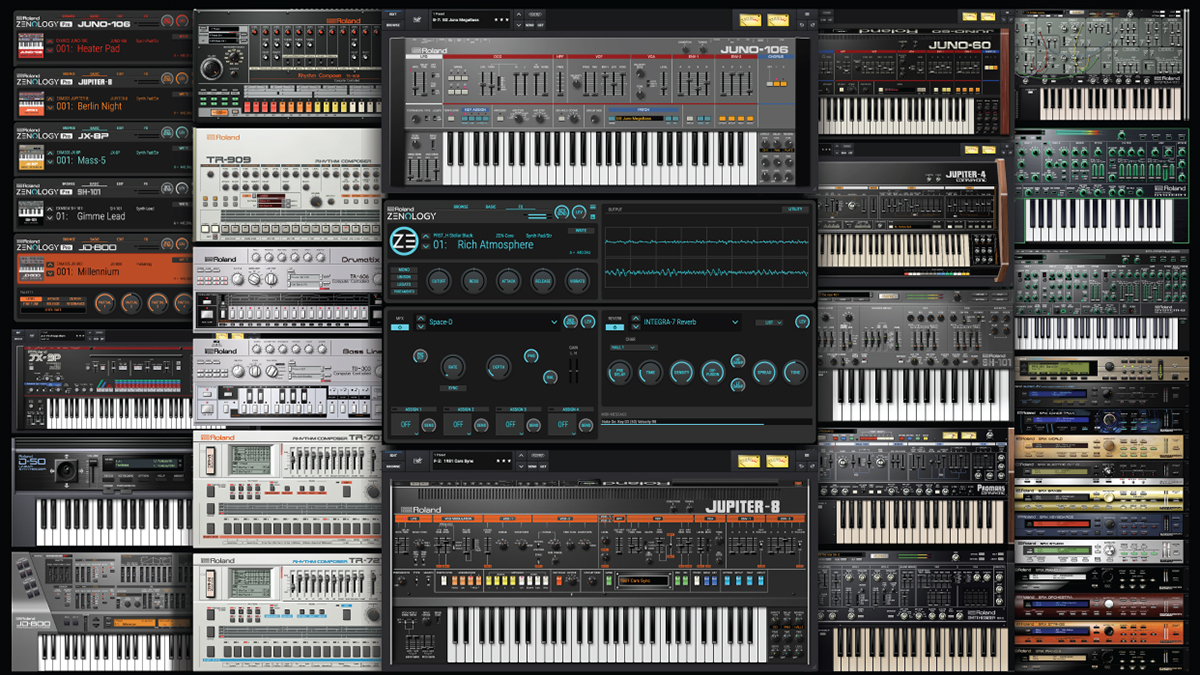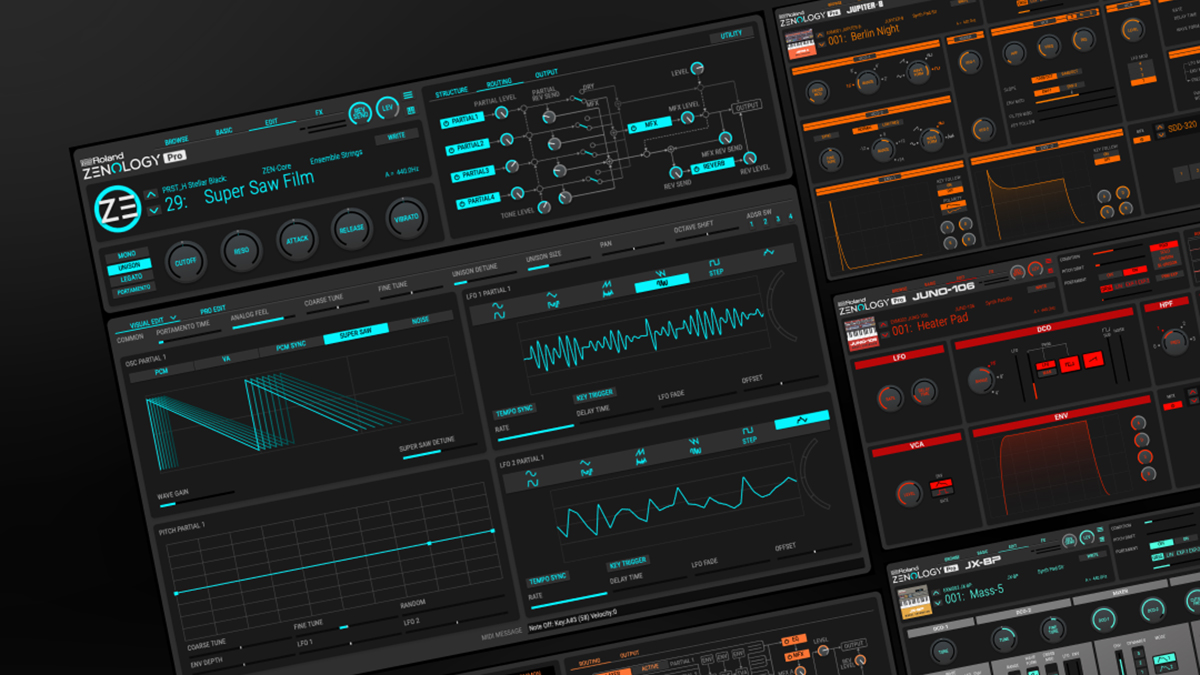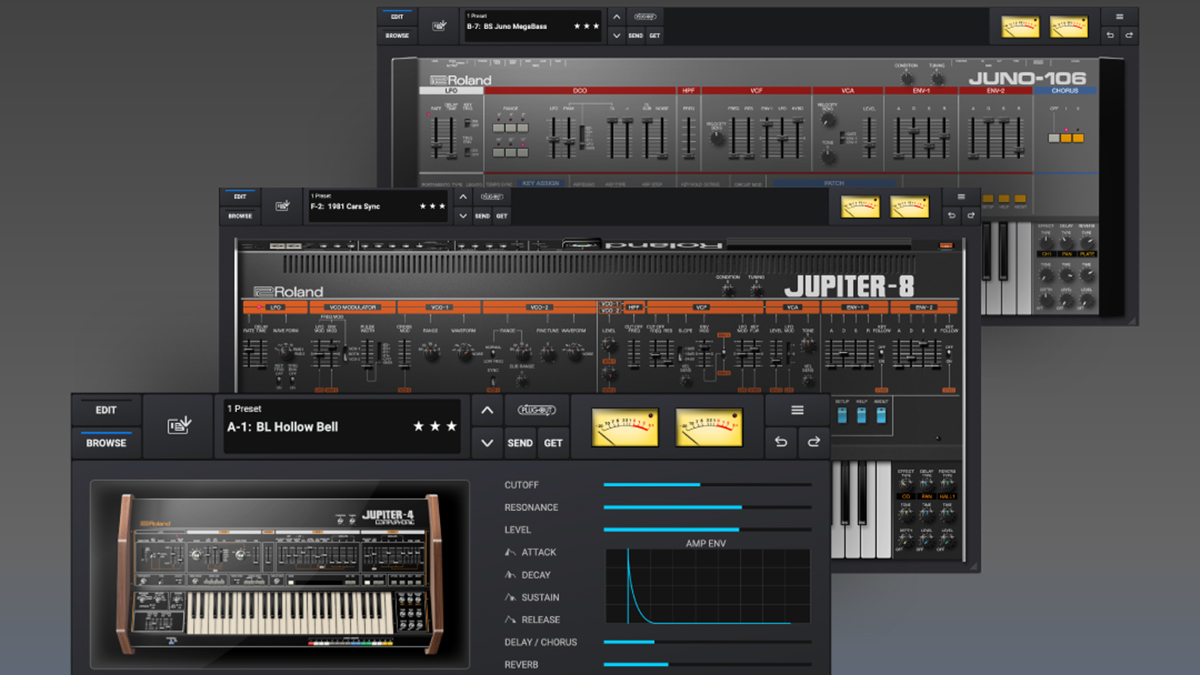Roland Cloud is the easy, affordable way to get your hands on classic synths, drum machines and more
More than 50 years of Roland history in your DAW

For more than 50 years, Roland has been making incredible hardware synths, but the launch of Roland Cloud in 2018 marked the moment that the company fully embraced software instruments, too. This ever-growing library of content now contains more than 50 plugins, including authentic emulations of some of the greatest synths and drum machines in history.
These are some of the defining sounds of the past half century, and once you’ve signed up as a Roland Cloud member, you can have them all on your PC or Mac, ready to be loaded up in your favourite DAW.
For many, the jewel in Roland’s Cloud is the Legendary section. This is where you’ll find stone-cold analogue classics such as the JUPITER (4 and 8), JUNO (60 and 106), SH (101 and 2) and TB-303 synths, all must-haves for any self-respecting electronic music producer.

But there’s more: digital deities including the D-50, JD-800, JD-1080 and XV-5080 are here, too. If you’d told synth fans back in the ‘80s and ‘90s that they’d one day be able to own not just one but all of these, they’d have been beside themselves.
And that’s before we get to those iconic drum machines. The TR range has become legendary, and the great news is that the 808, 909, 606, 707 and 727 are all included. You truly have a rhythmic option for every creative eventuality.
The history of Roland is all about innovation, though, so it’s fitting that Roland Cloud also contains a new synth, ZENOLOGY Pro, which gives you deep access to Roland’s very latest technology. If it’s cutting-edge sounds you’re after, this will deliver them in spades.
There’s also the ZENOLOGY FX plugin, which brings more than 90 classic Roland effects (think Juno chorus, tape echo and SP-404 lo-fi loveliness) into the Cloud fold, too.

Have we missed anything? Damn right we have, because Roland Cloud subscribers are frequently rewarded with new sounds for their instruments, too. You don’t have to save up for that SRX sound expansion board because they’re all here, as are numerous patches, patterns, sample packs and style packs.
We also need to talk about hardware integration; Roland Cloud is not only full of sounds for your computer, but also Model Expansions that can be loaded into various physical Roland synths, too. Want to put a JUPITER-8 inside your JUPITER-X? Go right ahead. Fancy turning your FANTOM into a JUNO-106? You’ve got it.
V-DRUM owners stand to benefit, too - owners of compatible hardware can download new kits, one-shot samples, play-along Jam Tracks and classic Roland drum machines for their electronic kit, giving it a whole new lease of sonic life.
If you want the full Roland Cloud experience - and, let’s face it: why wouldn’t you? - you need to go for the Ultimate Membership. This costs $20 a month, but if you sign up for a year, you’ll only pay $199, representing a 17% saving. If you don’t want to commit for that long just yet, you could try the three-month Ultimate Membership package, which can be had for $50.
Other options include the Pro Membership, which removes those legendary instruments and costs $10 a month or $99 a year, while the $3/month ($30/year) Core Membership is best suited to those who just want Roland’s suite of mobile apps, which are also included in the other membership tiers.
If you’d rather own one or more of the Roland Cloud instruments outright, you can simply sign up for a free account and pay for them as Lifetime Keys, so you’ll never lose access. On all the other plans, you’ll retain access to your content for as long as long as you remain a member.
If you’re not sure which Membership tier is for you, the good news is that you can try one for 30 days for free. So, our advice is to get the Ultimate package and spend the next month immersing yourself in everything that Roland Cloud has to offer.

Want all the hottest music and gear news, reviews, deals, features and more, direct to your inbox? Sign up here.